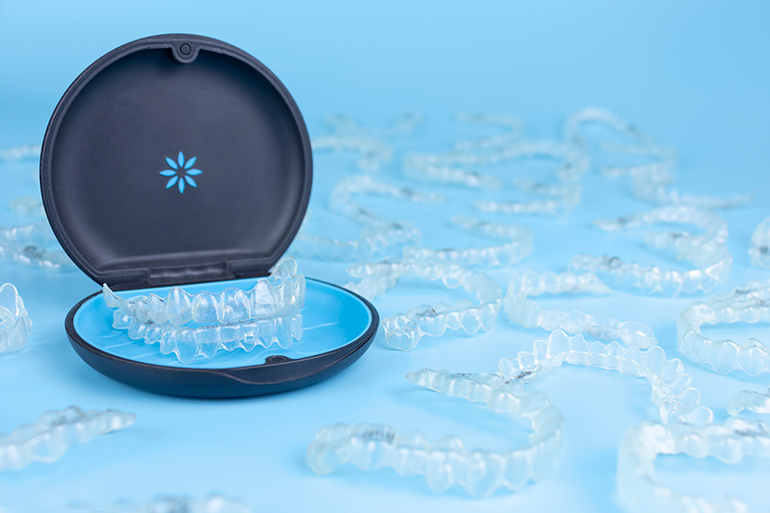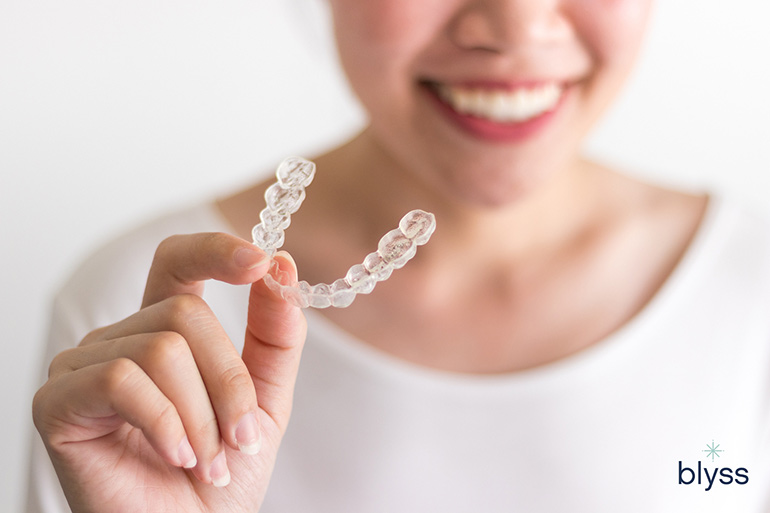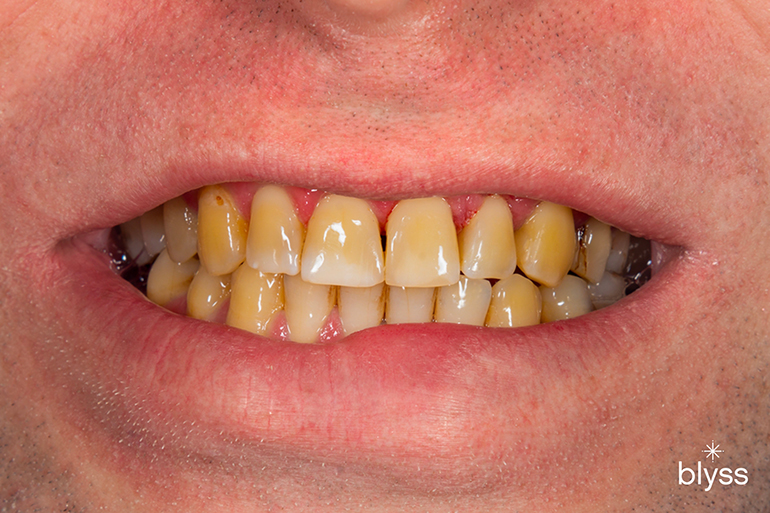Need orthodontics, but don’t want to deal with braces? You can get Invisalign in San Diego instead, and avoid many of the problems associated with getting your teeth straightened. But first, what is Invisalign? What are the pros and cons of Invisalign? Read on to find out.
Invisalign vs Braces
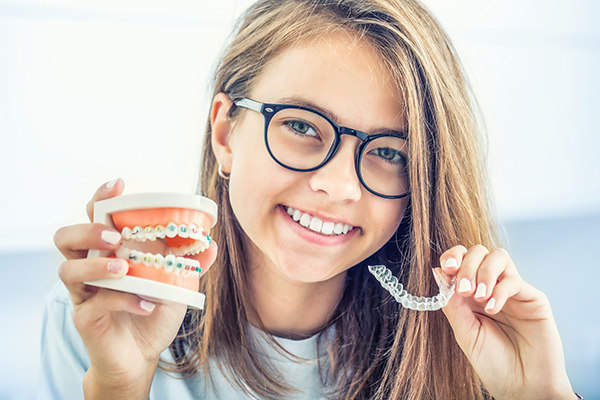
Is Invisalign better than braces? Invisalign is becoming a more popular alternative for traditional metal braces, especially for people who want a discrete way to fix their smiles.
Braces are used to reposition and realign teeth for aesthetic or functional reasons. People also use braces to help them fix a crooked smile or make eating and speaking easier.
Teenagers are the usual recipients, getting that correctional help they need as their adult teeth finish coming into place. However, more and more adults who missed out on braces in their youth are starting to their teeth.
The traditional system for braces is a series of metal wires and brackets fixed to the teeth that apply pressure over time. While these systems are affordable and reliable, they can be very off-putting for many.
It’s not hard to see why – they require special diets, they’re notoriously uncomfortable, and almost nobody likes smiling with a mouth full of metal.
That’s where Invisalign comes in. Invisalign is braces for people who hate the idea of braces – a transparent, discrete system of moving your teeth that doesn’t interrupt your life, or your smile.
If you’ve never heard of Invisalign and are interested in getting braces, here are the top pros and cons of this game-changing orthodontic system!
Pros of Invisalign
Invisalign is becoming one of the top options for teeth straightening. Here’s a rundown of the top reasons that make Invisalign better than traditional metal braces.
Invisalign Pro 1: Invisalign Is A Discrete System
As we said, nobody likes the look of themselves smiling with a mouth full of metal. At the very least, it’s not how they’d ideally like to be seen!
Invisalign avoids this issue by replacing metal wires and brackets with clear plastic aligners. Fundamentally they work the same – applying constant pressure to move teeth into place – but without the aesthetic impact.
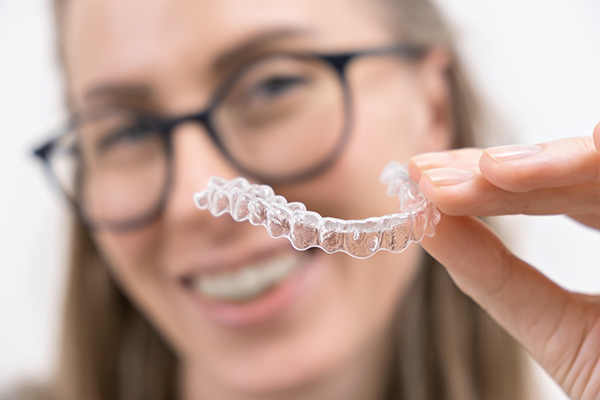
Discrete and aesthetic. Invisalign is a more discrete and aesthetic option for people who want to transform their smiles.
Because Invisalign is made of clear plastic, you can be confident wearing them in selfies, on social media, or in meetings. While the plastic isn’t completely invisible, it is very subtle and difficult for people to notice if they’re not looking.
The only way to get a more discrete look from your braces would be to get “lingual” braces, where the wires and brackets are attached to the tongue-facing side of your teeth.
This is a much more expensive – and frankly, uncomfortable – system, and lacks any of the other benefits of Invisalign.
Invisalign Pro 2: Invisalign Is More Comfortable
In the interest of transparency, no orthodontic system is completely, effortlessly comfortable. Having a foreign body in your mouth is always going to feel a bit strange to some degree.
That said, of all the braces options available on the market, Invisalign is the best tolerated by patients. The discomfort is usually more prevalent when switching to a new set of aligners, and fades over a day or two as your teeth get used to the pressure.

More comfortable. Many Invisalign patients testify that clear aligners are more comfortable than traditional metal braces.
Beyond that, Invisalign is made of plastic that doesn’t cut or irritate the gums or insides of your lips and cheeks, unlike traditional braces.
You’re unlikely to ever get blisters or ulcers from wearing Invisalign. Food is much less likely to get stuck and cause inflammation around your gums.
Overall, Invisalign is significantly more comfortable to wear throughout the treatment.
Invisalign Pro 3: Invisalign Has Predictable Computer-Guided Results
One of the tricky things about getting braces is you’re never quite sure how it’s going to look when you’re done. You and your dentist plan a treatment and hope that, with years of experience and proper preparation, you’ll reach exactly the result you’re after.
When you get Invisalign in San Diego – or anywhere else for that matter – there’s a little less hoping and a bit more certainty.
Invisalign treatments are planned out ahead of time using sophisticated computer-guided planning software. Detailed digital scans of your teeth are made, and the computer calculates the ideal sequence of aligners necessary to push your teeth into an ideal outcome.
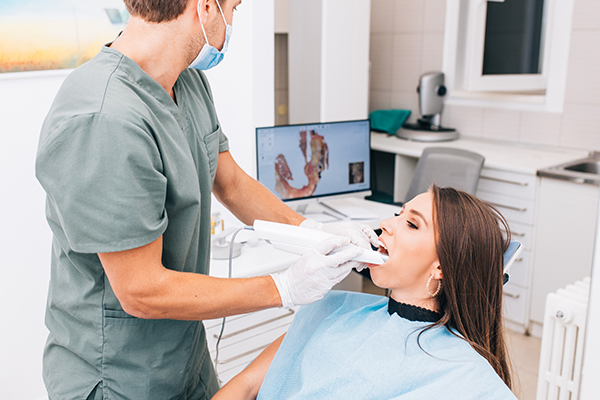
Invisalign results are predictable. With the use of computers, patients can instantly see how Invisalign will impact their smiles after the whole treatment.
This technology allows both the dentist and the patient to see how the treatment will progress from the first aligner to the last. Patients know going in what different looks their teeth will take, and know with some confidence what the final output will be.
This planning can and will change over the course of treatment. Sometimes teeth move better than anticipated or need a little more encouragement. But at every stage, you’ll be able to have a good idea of where you are in your treatment and where you’re headed.
Invisalign Pro 4: You Can Take Them Out To Eat And Clean
When you wear braces, the brackets are fixed to your teeth and the wires are fixed to your brackets. The system isn’t coming out without a trip to the dentist, so you need to be careful about what you’re eating. It can’t be too hard, you have to make sure it doesn’t get stuck in the braces, and so on.
Then when it comes to cleaning, you need to take extra care to clear all food from the braces and clean the braces specifically.
It’s a lot of extra work.
One of the greatest strengths of Invisalign is that it’s user-removable. Time to eat? Pop the aligners out and eat. Time to clean your teeth? Pop the aligners out and brush and floss just like you normally would.
You don’t need to worry about any special diets, and there are no special cleaning instructions. You may need to clean the aligners themselves now and then if anything does get stuck in them, but this is unlikely.
Invisalign Pro 5: You Don’t Need To See A Specialist
A specialist orthodontist typically does braces. That means getting a referral from your dentist in San Diego, visiting another dental specialist, and paying specialist rates.
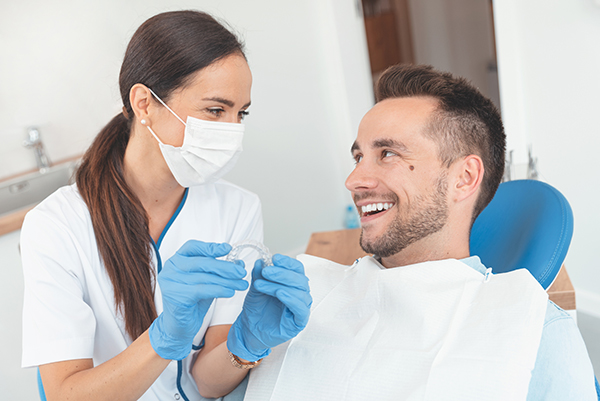
Do you need to see a specialist for Invisalign? No. Your dentist can facilitate the Invisalign treatment as long as he/she is an Invisalign-trained and certified practitioner.
Invisalign is a system that a general dentist can deliver confidently and effectively. You don’t need to see a specialist – you can just see a regular dentist. This is especially useful for people who don’t live near a specialist or may not have the money to visit one on top of their dental appointments.
Invisalign Pro 6: Less Dental Visits, Done Faster
Dental braces can only be adjusted by a dentist or orthodontist. You can’t take them out at home, you can’t adjust them on your own. This means that you need fairly regular trips to the dentist. This is to have the braces checked and adjusted to make sure they’re still pulling your teeth into the right place.
Invisalign requires fewer and shorter visits. Your dentist may require you to visit every 2-3 months for a quick checkup to make sure everything is progressing well with your clear aligners. The visit is quick. Your dentist doesn’t need to do adjustments as with braces. Everything is done through computer-aided planning and execution.
This removes a huge and often unconsidered burden from patients who get braces – the cost of time, visiting your dentist or orthodontist in San Diego regularly throughout treatment.
Cons of Invisalign
No system is perfect and, despite the many wonderful benefits listed above, Invisalign is certainly no exception. In the interest of providing well-rounded information, here are some of the potential downsides of using Invisalign vs braces.
Invisalign Con 1: User Compliance Is Crucial
One of the biggest benefits of Invisalign is that you can take them out yourself to eat and clean. This is also one of the biggest downsides: you must remember to put them back in.
The number one reason why Invisalign doesn’t work – or takes significantly longer than anticipated for some – is patients not remembering to replace their aligners after taking them out.
You need to wear Invisalign aligners around 20 hours a day to be effective – plenty of time to take them out to eat and clean, so long as you remember to put them back in.
Another common issue is people losing one or both aligners. The system is made of clear plastic – great for not being seen in a photo, not so good if you’ve dropped it on a floor and are trying to find it.
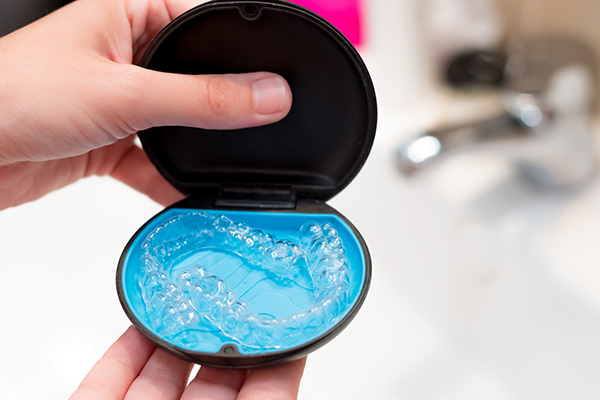
Don’t lose it. For convenience, Invisalign comes with a carry case so you wouldn’t misplace your aligners.
Invisalign comes with a convenient carry case for when they’re not in use, but still, it’s up to the user to remember to use it – and remember where they put it!
Invisalign Con 2: The Invisalign Diet
Yes, we said you don’t need a special diet for using Invisalign. You’re welcome to eat whatever you want.
However, you may find yourself getting a bit pickier about what you eat and when. Needing to go through the effort of taking the aligners – and sometimes, rubber bands that attach to them to help guide the process – really makes you second guess having a snack.
This isn’t strictly a con, just be aware you may find yourself skipping your favorite foods or drinks in favor of leaving your aligners in place. Some people rave that this helped them lose weight because they don’t eat mindlessly as often in between meals.
Luckily as the treatment progresses you will find yourself getting more adept at dealing with the aligners, and will freely snack and drink at will without a care.
Invisalign Con 3: Cost Comparison
Invisalign is more expensive than conventional braces. If you need a truly cost-effective orthodontic solution, your best bet is the old metal wires and brackets.
If you want the best Invisalign in San Diego, you need to pay accordingly.
Orthodontists will charge about $6-$8k for Invisalign treatment; a general dentist will typically charge less. In either case, they will charge more for Invisalign than for regular braces.
Check out our Invisalign cost packages here:
| INVISALIGN COST PACKAGES | AVERAGE COST | BLYSS DENTAL COST |
|---|---|---|
| Invisalign Go or Invisalign Lite | $4000 | $3897 |
| Invisalign Comprehensive | $5500 | $5637 |
The exact price will depend on the severity of your case and the number of aligners needed to treat it. You may need as little as 6 months or as much as 2-3 years.
One way to consider the price increase is to also consider you will need to visit the dentist less throughout treatment. You end up paying more money, yes – but you save so much more time.
Want to navigate Invisalign cost and get tips on how to save thousands of dollars? Read our article on Invisalign San Diego cost here.
Invisalign Con 4: Candidacy
The Invisalign technology has been developed and improved upon since its inception. It is now capable of treating a very broad range of cases, much more than it was when it was first introduced.
Unfortunately, it’s still not able to treat all cases.
Some tooth problems are simply too complex for Invisalign to treat effectively. For those cases, you’ll need to see an orthodontist, and you’ll need traditional braces.
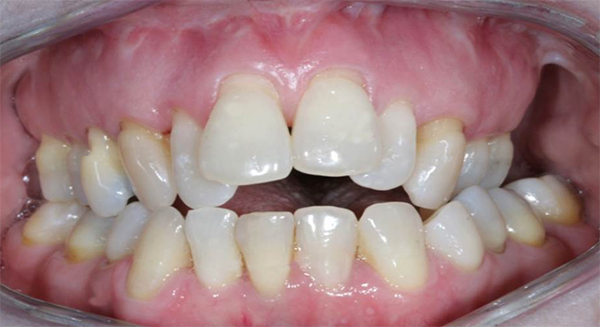
Invisalign cannot treat all cases. Invisalign cannot fix some severe teeth alignment immediately.
It’s not all bad news, however. It’s sometimes possible to do a hybrid treatment. This involves getting the teeth to a certain point using traditional braces, then switching over to Invisalign at a later stage.
It’s also worth noting that Invisalign is often not advisable for teenagers, as user compliance is typically lower in that age group. Of course, many teenagers are responsible and mature – and your dentist is more than happy to make an exception.
Invisalign Pros and Cons: Final Count
It would be easy to look at the 6 pros to 4 cons and see that Invisalign is a superior option for braces, but it’s a little more complicated than that.
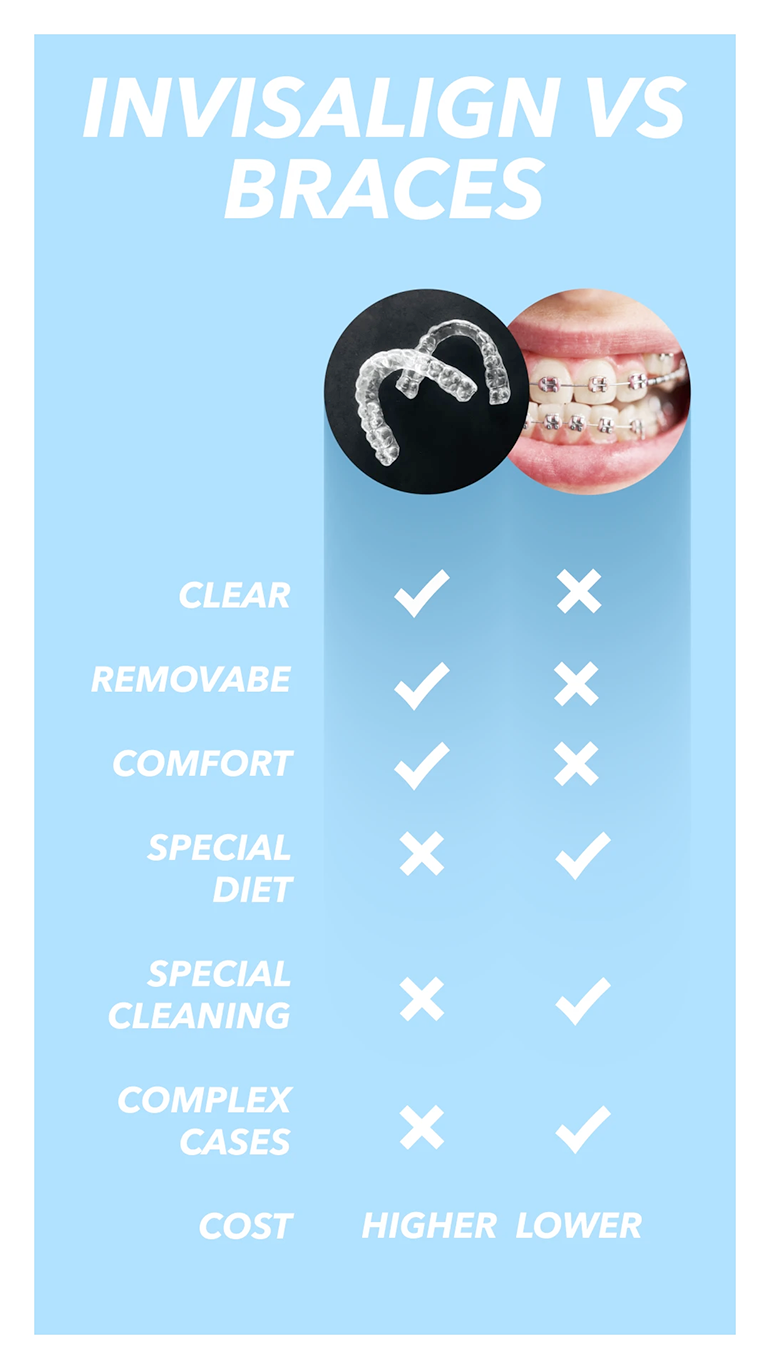
Invisalign vs Braces. Use this simple infographic to help you decide whether to go with Invisalign or traditional braces.
If you require orthodontic treatment, it is well worth your time to consider Invisalign in San Diego. Invisalign is a great method for adjusting your teeth for eligible candidates. It’s discrete, comfortable, and fits into your life quite easily.
Unfortunately, not everyone is eligible.
To find out if Invisalign is the right solution for you, please feel free to book a free consultation with Blyss Dental here in San Diego, California. I will let you know if Invisalign treatment can help you achieve the smile you desire, starting today.
Drop by our contact us page to know more about Invisalign in San Diego.
